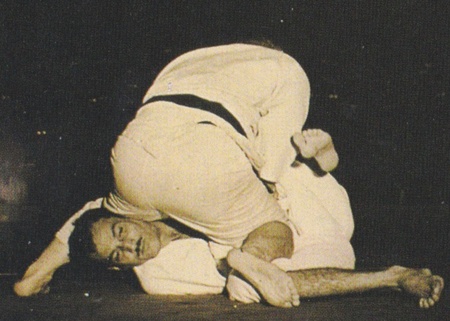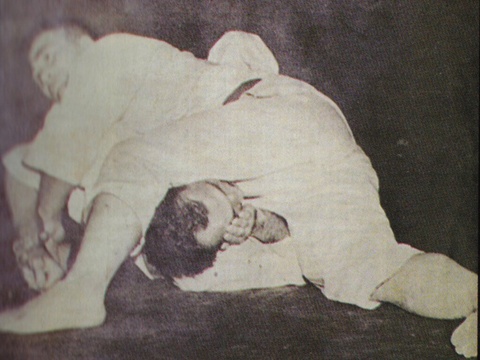
I spent 18 years researching Kimura Masahiko, who is said to be the strongest judoist in the history of Japan, and published a book about him 10 years ago. The climax of that story was the match between Kimura Masahiko and Helio Gracie, held at the Maracana Stadium in 1951.
The book, with its long title "Why Didn't Kimura Masahiko Kill Rikidozan?" (Shinchosha), was as thick and expensive as an encyclopedia in this age of frivolity and short-termism, and because it dealt with Kimura Masahiko, who had been forgotten by history, the publishing industry said it would "never sell."
However, it was reprinted again and again, and the hardcover alone sold a record 28 times. This is probably because this book is not just about judo, but gives readers the feeling of traveling the world with the main character, Kimura Masahiko, and reliving the history of the pre-war and post-war periods.
There is a memorial museum called the Gracie Museum in California, USA, and the jiu-jitsu uniform that Helio wore when he lost to Masahiko Kimura is proudly displayed in the most prominent place. For the Gracie family, this match, which took place 70 years ago, is not just a defeat, but a source of pride. And not only Helio. It is a legendary match that is spoken of with awe by MMA (mixed martial arts) fighters, who are currently thriving all over the world.
At the time, Helio Gracie was a hero in the Brazilian martial arts world, fighting various fighters including boxers and wrestlers and winning consecutive matches.
The Japanese judokas in Colonia all tried to take him down, but they were unable to adapt to the harsh rules advocated by Gracie's side, which were to fight until he tapped out (gave up) or was choked out (lost consciousness), and were all defeated by Helio. Under these rules, no matter how many times he was thrown, it was not a "win by submission" like in Kodokan Judo, and the fight would continue on the ground, so Gracie Jiu-Jitsu dominated the arena.
The only person who could fight on an equal footing was Yasukazu Ono, a grounder who had a background in old-style jujutsu and was a direct disciple of Yaichibei Kanemitsu (the old Rokko high school teacher). However, Ono also fought twice to draws and was unable to break Helio's stronghold.
The Japanese, the suzerain of Judo, could not win at all. The frustration of the Japanese people in the colonia reached a peak. Moreover, at that time, the Japanese people were divided into the "winners" who believed that Japan had won World War II, and the "losers" who correctly recognized that Japan had lost. These two groups continued to fight in a bloody battle, resulting in many casualties. In order to unify the hearts of the confused Japanese people, it became the Japanese colonia's top priority to defeat Elio.
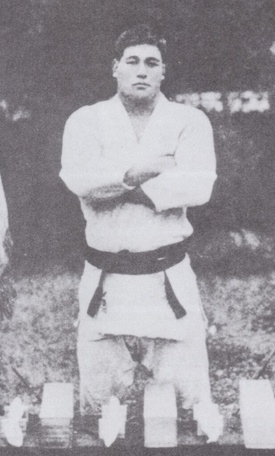
Then came Masahiko Kimura, who was 34 years old at the time and in the prime of his life, having retired from active competition after 15 years of undefeated fighting in Japan both before and after the war. He visited Brazil accompanied by two other powerful players, Toshio Yamaguchi and Yukio Kato.
Kimura weighed in at 85kg, which is not particularly large for a judoka, but his strength and violent judo style earned him the nickname "Demon Kimura." When standing, he would perform a powerful o-soto-gari that would knock his opponent unconscious by hitting the back of his head, and when lying down, he would use arm locks to pin his opponent from any position, so no matter how big his opponent was, he was no match for him.
Helio Gracie challenges Masahiko Kimura and his teammates who are holding judo demonstrations around Brazil. This is a chance for Helio to make his name even more famous.
Masahiko Kimura said, "It won't be until I do it," and brought out 22-year-old Yukio Kato. He is an active wrestler with a brilliant track record, including first place in the Chiba Championship and the Kodokan Doyukai Championship.
Kato surprised and delighted the Japanese people by throwing Helio over and over in the match, but due to the rule that no matter how many times he threw him, he could not win, the match ended in a draw. In the second match on a different day, Kato was choked out by Helio. A Brazilian newspaper ran a photo of Kato with his eyes rolled up and unconscious, under the headline "Yellow Race Choked Out."
Gracie's side was at the peak of their skills. The Japanese Colonia side was enraged. They stormed into the hotel where Kimura and his group were staying and pleaded with them day after day to "beat Helio!" One of the group, Toshio Yamaguchi, was a big man weighing over 100 kg and nicknamed "The Tiger of the South Manchuria Railway," but he backed down because he thought the rules would put him at a disadvantage.
"Okay. I'll accept the challenge."
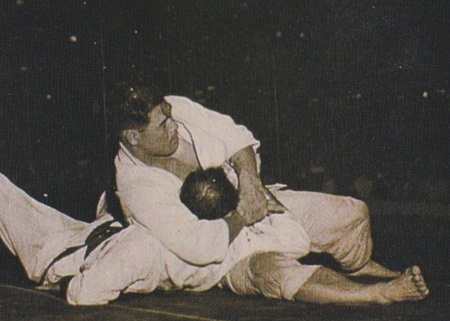
Masahiko Kimura finally takes a stand. On October 23, 1951, the vice president and other important figures from the political, financial and government circles came to Maracana Stadium, and the tens of thousands of spectator seats set up on the field were filled to capacity. The Japanese people had placed their trust in Masahiko Kimura, but there was an air that riots could break out no matter who won. Both the Japanese people and the Brazilians were enraged by the proxy war. For this reason, armed police officers with rifles were stationed throughout the stadium.
In this tense atmosphere, Masahiko Kimura hits Helio in the back of the head with a large outside reap. He was hoping to knock him out, but the mat was too soft and he failed. The match went straight to the floor. Kimura finally applied his specialty arm grab, but Helio didn't tap out. Kimura had no choice but to break Helio's arm and win the match.
However, there were no riots as the authorities feared. The two men's all-out fight captivated the large crowds, with Brazilian newspapers praising Kimura's strength and Japanese newspapers praising his opponent, Helio's unstoppable mental strength.
Masahiko Kimura died in Japan in 1993. Six years later, Hélio Gracie made his long-awaited first visit to Japan to accompany his fifth son, Royler, to a match. When Hélio visited the Kodokan, tears welled up in his eyes when he saw a photo of Masahiko Kimura.
"I have only ever been defeated in a jiu-jitsu match once, to the great Japanese judoka Masahiko Kimura. That fight was a humiliation I will never forget, but at the same time, it is also a source of pride."
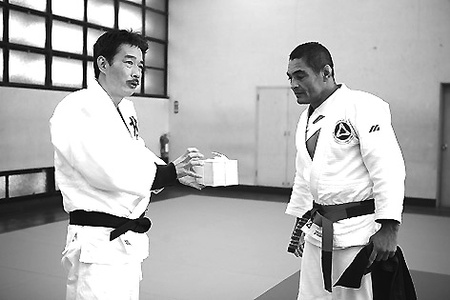
*This article is reprinted from the Nikkei Shimbun (June 24, 2021).
© 2021 Toshinari Masuda / Nikkey Shimbun



